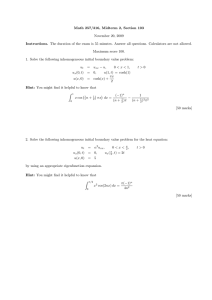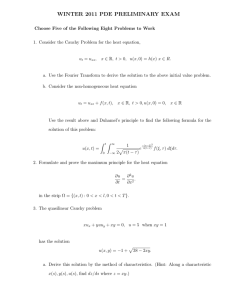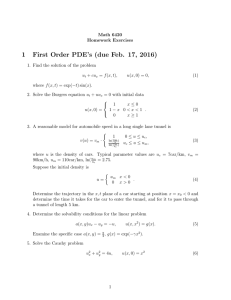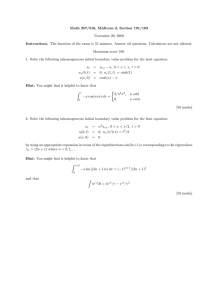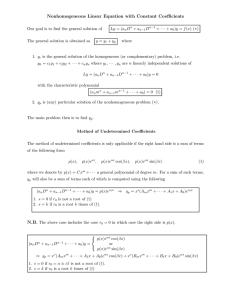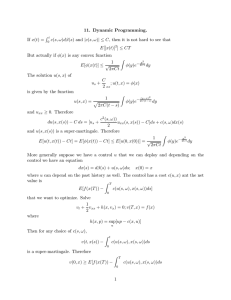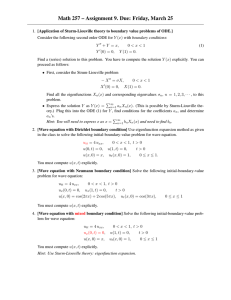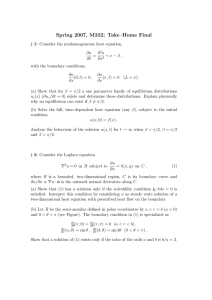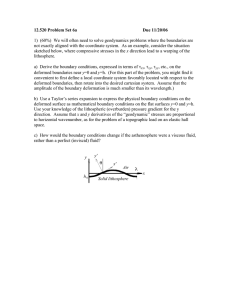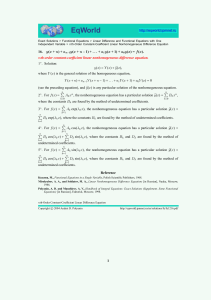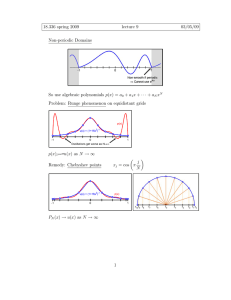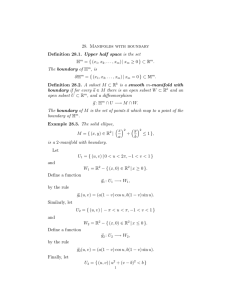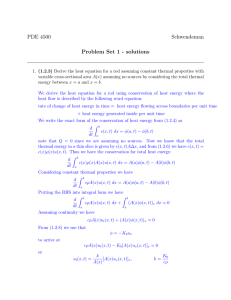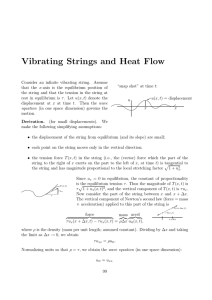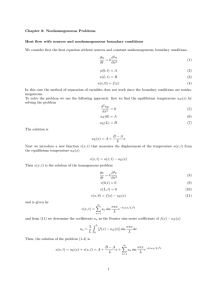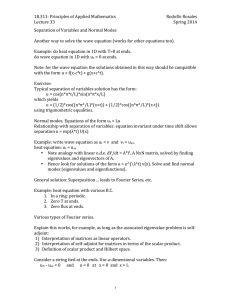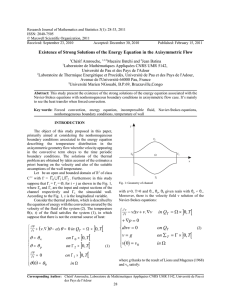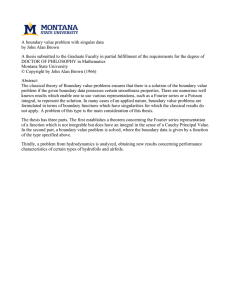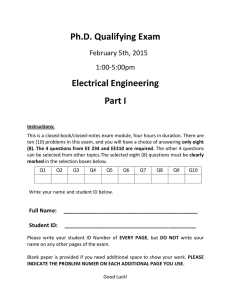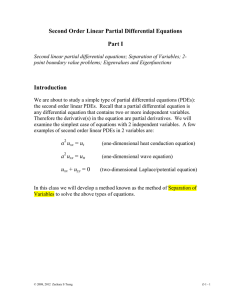Spring 2007, M332: Take–Home Exam 2
advertisement
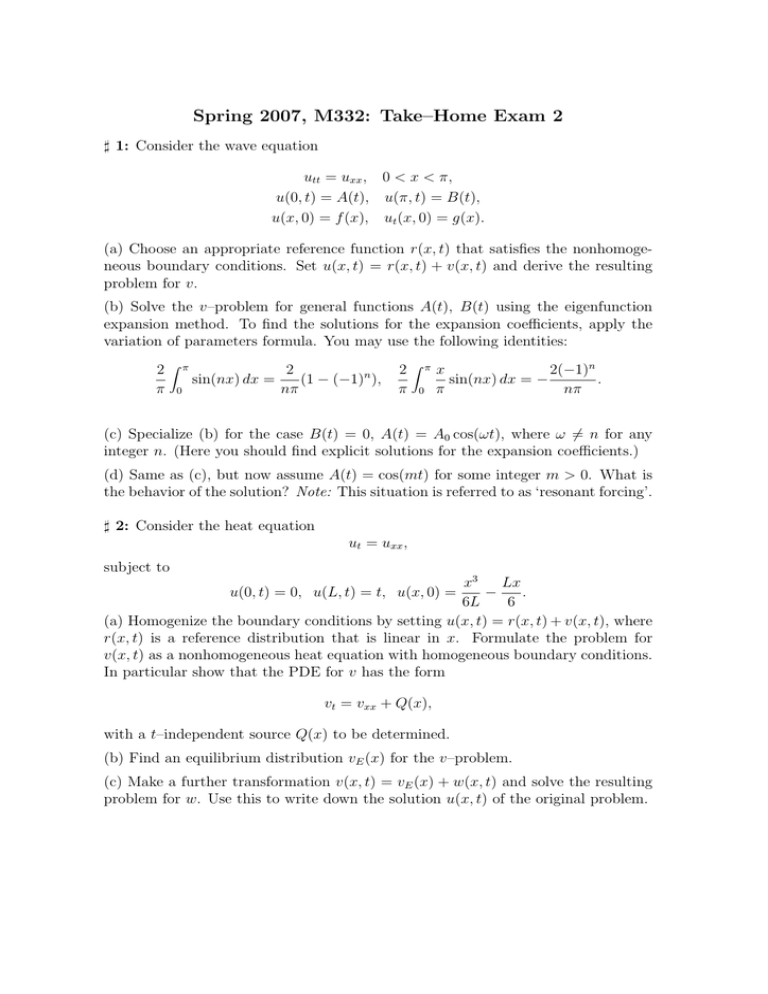
Spring 2007, M332: Take–Home Exam 2 ] 1: Consider the wave equation utt = uxx , 0 < x < π, u(0, t) = A(t), u(π, t) = B(t), u(x, 0) = f (x), ut (x, 0) = g(x). (a) Choose an appropriate reference function r(x, t) that satisfies the nonhomogeneous boundary conditions. Set u(x, t) = r(x, t) + v(x, t) and derive the resulting problem for v. (b) Solve the v–problem for general functions A(t), B(t) using the eigenfunction expansion method. To find the solutions for the expansion coefficients, apply the variation of parameters formula. You may use the following identities: 2Zπ 2 sin(nx) dx = (1 − (−1)n ), π 0 nπ 2Zπx 2(−1)n sin(nx) dx = − . π 0 π nπ (c) Specialize (b) for the case B(t) = 0, A(t) = A0 cos(ωt), where ω 6= n for any integer n. (Here you should find explicit solutions for the expansion coefficients.) (d) Same as (c), but now assume A(t) = cos(mt) for some integer m > 0. What is the behavior of the solution? Note: This situation is referred to as ‘resonant forcing’. ] 2: Consider the heat equation ut = uxx , subject to x3 Lx − . 6L 6 (a) Homogenize the boundary conditions by setting u(x, t) = r(x, t) + v(x, t), where r(x, t) is a reference distribution that is linear in x. Formulate the problem for v(x, t) as a nonhomogeneous heat equation with homogeneous boundary conditions. In particular show that the PDE for v has the form u(0, t) = 0, u(L, t) = t, u(x, 0) = vt = vxx + Q(x), with a t–independent source Q(x) to be determined. (b) Find an equilibrium distribution vE (x) for the v–problem. (c) Make a further transformation v(x, t) = vE (x) + w(x, t) and solve the resulting problem for w. Use this to write down the solution u(x, t) of the original problem.

